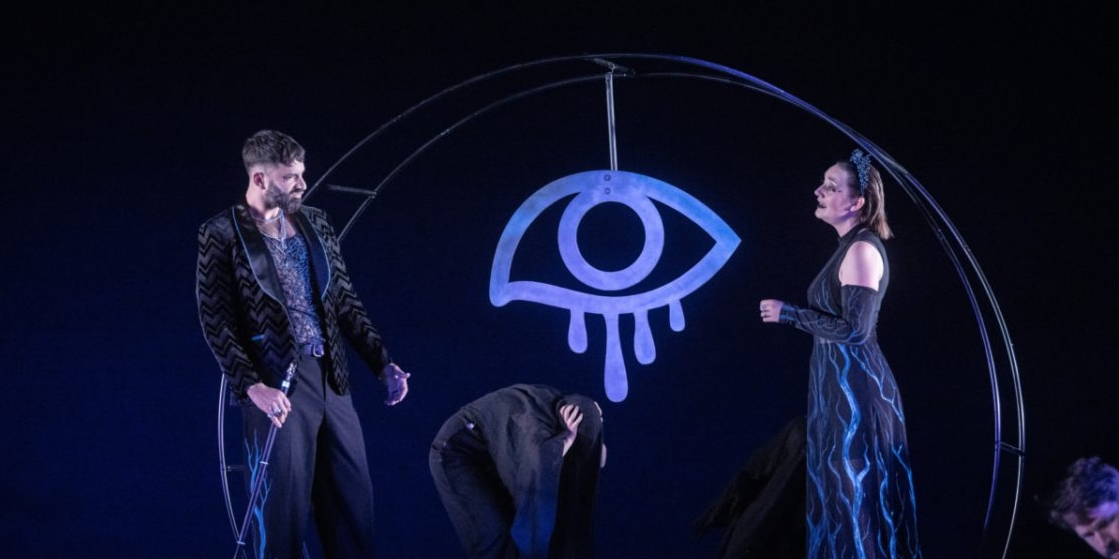Although I wasn’t entirely convinced by the actual production and the concept behind it, I found this performance of Monteverdi’s L’Orfeo at this year’s Longborough Festival Opera serviceable and not irritatingly distracting for a good reason: because the musical performances were so compellingly stylish and pleasing. Also, to be fair, Director Olivia Fuchs and Designer Nate Gibson did a decent job on the stylistic overall look (I especially liked the tears dropping from eyes as a motif in Hades) and certainly Fuchs got very convincing performances out of the cast.
The part of Orfeo, in this earliest surviving opera, is dazzling, demanding and must be one of the longest in the repertoire. Musically and dramatically Peter Gjisbertsen was completely up to the job, full of stamina and able to convey the feeling appropriate to each moment of the story through his vocal acting and his superbly controlled physicality. This was a subtle and compelling, nuanced and varied Orfeo. Quite simply put, Gjisbertsen completely delivered every aspect of the part from his first utterances until he’s finally made immortal by his father (the impressive Apollo of Seumas Begg); he was up to all the demands of the this complex role. He was moving in his grief over Euridice’s death, powerful in his confrontation with Charon, heroic in his willingness to harrow Hell to retrieve his beloved. He acted and sang the role with nuanced inflections of his voice and with body and facial language that conveyed his mental states at all times. Aoife Miskelly was a suitable partner as his Euridice,
Every single member of the cast seemed to me to make a fine individual contribution to the evening. I was especially struck by the acting and warm voice of Frances Gregory as the Messenger and as a rather sexy Prosperina. Her scene with Plutone (an excellent Julien Ségol), trying to get him to let Euridice go, was particularly strong and subtle as played by these talented singing actors. Freddie Tong’s Caronte was also memorable.
My quibbles about the evening have to do with the update which was, to be fair, treated consistently – pop band moments, the hospital gurney that doubles as the boat that takes Orfeo across the River Styx—and I’m sure that for some people it made more sense than it did for me. But, as I have suggested, it did not get in the way nor lessen my enjoyment because the straightforward singing, stylistic vocal integrity and declamation of every character on that stage stood out. I was also not convinced by some of the movement devised by Clare Whistler, especially at the start, For me, though I could understand its consistency with the update, the pop movements and dancing somehow seemed more of an imposition on the score than an interpretation or matching response to the music and the story. They seemed to me to be in somewhat awkward conflict with Monteverdi.
However, the aspect of the evening that made this such a worthwhile event was not just the excellent performances on the stage but the playing of the band La Serenissima on original instruments. As conducted by Robert Howarth with complete understanding of the style I was totally convinced by the tempi, the clarity of the sound, the sensitivity to every nuance of both the score and the drama, by all of the band; their playing was impeccable and totally pleasing throughout. This was a captivating reading the score of L’Orfeo and for me felt stylistically correct in its musical presentation and also in the acting and singing of individual characters. The small ensemble was a gift for the ears throughout.: varied, nuanced, captivating, clean, with every instrument a model of clarity and focus.
If you are interested in Renaissance music, Renaissance drama and the earliest glimmers of what became Opera as an art form, this is a very good example of all three.

